OTA PASSING OUT PARADE
Current Events :











OTA PASSING OUT PARADE
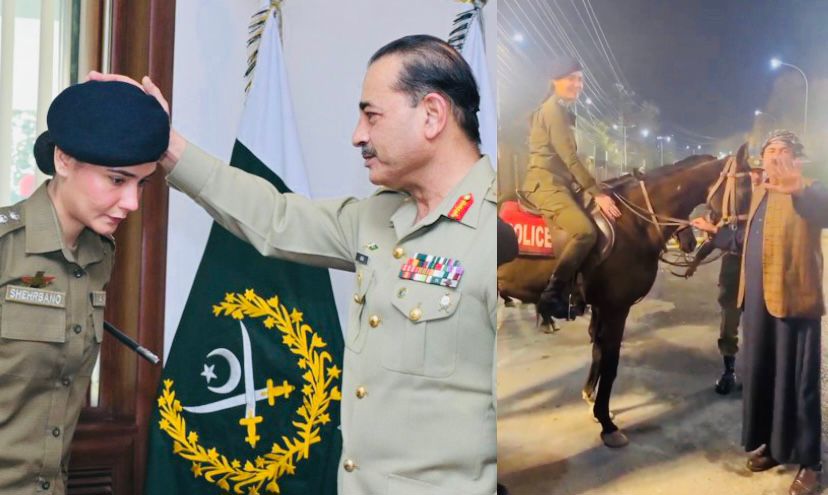
From Saudi royal treat to highest gallantry award, the Pakistani police officer is being rewarded for her brave act of saving a woman by taking on a mob in the Lahore market.
Saudi Arabia’s Ambassador to Pakistan Nawaf bin Said Al-Malki would arrange a royal visit for ASP Syeda Shehrbano Naqvi and her family following her heroic actions in saving a woman from a violent mob in Lahore’s Achhra Market, reports Geo News.
The source said Nawaf bin Said Al-Malki appreciated the courage of the police officer and told her that the Saudi government would bear the expenses of her travel to Saudi Arabia with her family as a royal guest.
Below are the latest posts wherein people are making a beeline to click selfies with her.
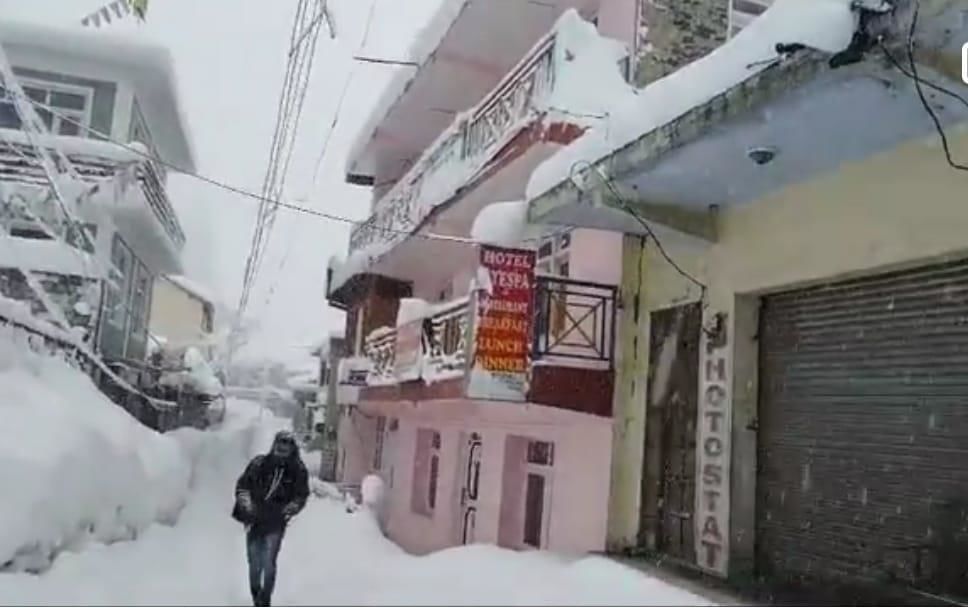
Rain lashed parts of Northern India, including Delhi, Punjab and Haryana, early on Saturday with fresh snowfall being recorded in Himachal Pradesh region.
The Manali-Leh highway was blocked to normal traffic beyond Solang Nala towards Keylong due to heavy snowfall. It was snowing heavily in Manali and Lahaul and Spiti region since Friday evening, which rendered several roads blocked.
Heavy snowfall was witnessed near Atal tunnel on this highway which blocked a majority of roads in Lahaul and Udaipur subdivision of Lahaul and Spiti district.
Sumdo-Kaza-Gramphu highway was blocked to traffic in Spiti region, while traffic became standstill in entire Lahaul and Spiti district due to fresh snowfall.
Lahaul and Spiti DC Rahul Kumar issued an advisory for the general public to stay in their homes and avoid venturing toward snow avalanche prone areas in the district.
He said the Border Roads Organisation will engage its workforce and machinery to clear snow on the Manali-Leh highway as soon as weather improves.
Meanwhile, multiple landslides triggered by incessant rains blocked the strategic Srinagar-Jammu national highway on Saturday.
Officials said that multiple landslides triggered by incessant rains between Banihal and Ramban sectors have blocked the Srinagar-Jammu highway.
“No traffic will be allowed on the highway on Saturday. Landslide clearance operation will start once the rain stops in the area,” officials said.
Also, heavy snowfall continues to block the Srinagar-Leh, Mughal Road, Sinthan-Kishtwar, Bandipora-Gurez and Kupwara-Tangdhar roads.
Rain also lashed parts of Delhi even as the national capital’s minimum temperature settled five notches above normal at 18.2 degree Celsius, the India Meteorological Department said.
The Met office has predicted generally cloudy skies with light to moderate rain or thundershowers, accompanied by gusty winds during the day. — with agencies
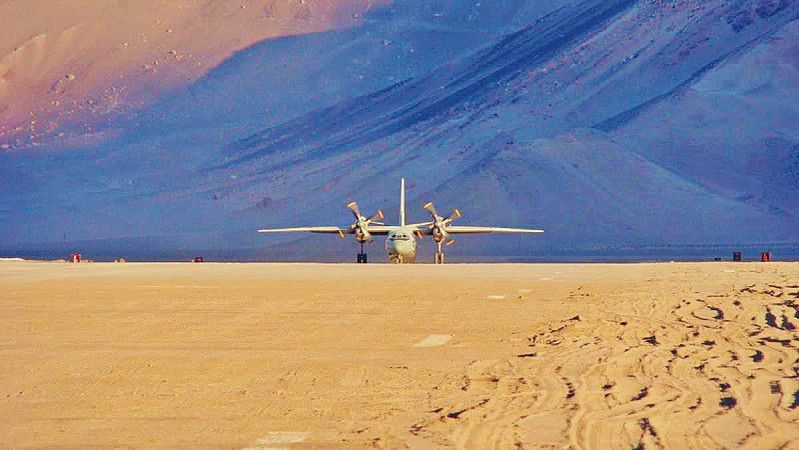
jay Banerjee
New Delhi, March 1
In what matches the rapid deployment of Chinese across the Line of Actual Control (LAC), the Nyoma airstrip in Eastern Ladakh now has a black-top, means a paved runway. The IAF will start operating transport planes and attack helicopters from the location.
Notably, it will take another two years for allied infrastructure to come up, however, the landing strip is paved and ready to take transport planes. The initial trials for landing the planes are already underway. The IAF has an operational base in Leh and full-fledged airstrips in Kargil and Thoise (base of Siachen). The one at Nyoma will be the fourth in Ladakh.
Strategic importance
Nyoma, located on the banks of the Indus, is some 180 km south-east of Leh at an altitude of 13,700 feet and is just 30 km from the LAC. It is a natural flat and was earlier being used by helicopters and special operation planes like C-130 J that can land on the mud-paved runways.
In September last year, Defence Minister Rajnath Singh had laid the foundation stone to make a base at Nyoma. The Border Roads Organisation (BRO), under the MoD, is taking up the Rs 214-crore project that includes paved runway. Once the base is fully ready, it will have the ability to launch and recover planes and also carry out minor maintenance jobs. The BRO plans to complete the project in two years. The site is spread over 1,235 acres. The alignment of Nyoma is that aircraft can land and take off from both directions.
After the military stand-off with China in April 2020 along the LAC and the subsequent clash at Galwan in Eastern Ladakh in June 2020, a major air effort was launched.
Over 68,000 soldiers, around 90 tanks, nearly 330 BMP infantry combat vehicles, radar systems, artillery guns and other equipment were airlifted by the Air Force after the Galwan clash. This was a part of the rapid deployment along the LAC.
At the start of the stand-off, the IAF deployed its Su-30 MKI and Jaguar jets for round-the-clock surveillance and intelligence gathering on the enemy build-up. Since then, squadrons of Rafale and MiG-29 have also been deployed in Ladakh.
The IAF also quickly enhanced its air defence capabilities and combat readiness by installing various radars and bringing a range of surface-to-air guided weapons to frontline bases along the LAC in the region.
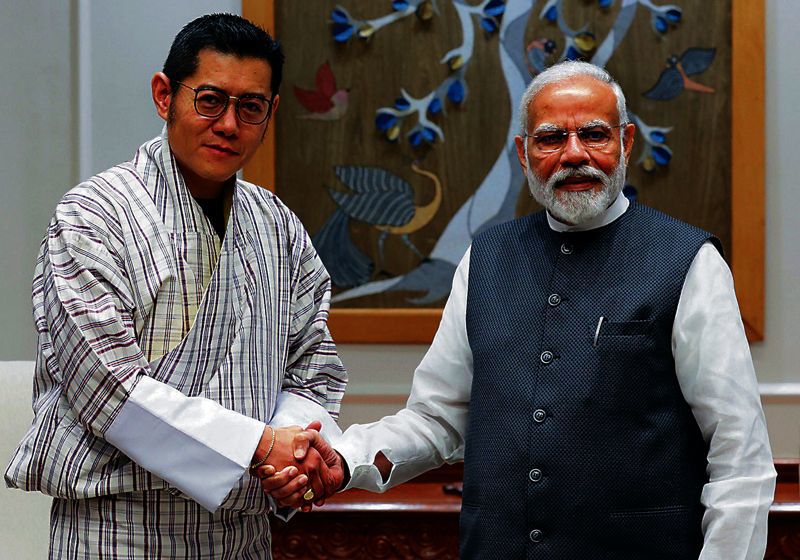

TSHERING Topgay was sworn in last month as the Prime Minister of Bhutan, succeeding Lotay Tshering. He had led the People’s Democratic Party to victory in the elections to the national assembly. The Bhutan Tendrel Party, a new entrant led by Pema Chewang, emerged as the main Opposition party. Meanwhile, the United Nations announced that Bhutan was no longer an LDC (least developed country), though economic distress is around the corner, even as India will ‘bridge-finance’ Bhutan’s 12th and 13th Five-Year Plans. Between 2008 and 2013, then PM Jigme Thinley expanded Bhutan’s diplomatic relations by reaching out to several countries, except the P5 nations. Towards the end of his term, Thinley made serious overtures to the Chinese, causing unease in India.
The Global Times sees an Indian hand in opposing Bhutan-China diplomatic relations. The regime change following pro-Chinese overtures was more than a coincidence. When I visited Bhutan after the 2017 Doklam episode, I noticed an undercurrent of anti-India sentiment as some Bhutanese wanted to open up to China.
In an interview with an Indian newspaper in October last year, then PM Lotay Tshering discussed the dramatic progress in the border talks with China between 2020 and 2023. Referring to the three-step roadmap, he emphasised that there were no ‘real differences between Bhutan and China’ and that one more meeting ‘while we are in office will clinch the issue’. He added: “We hope to see the border demarcation materialise.” Asked whether Doklam would be traded for land in the north — Jakarlung and Pasamlung valleys — Lotay confirmed this, adding that neither side had evidence to claim it. This set the cat among the pigeons. Traditionally kept in the loop over Bhutan-China border talks, India appeared to have been left out at that time.
In November last year, King Jigme Khesar Namgyel Wangchuck visited New Delhi and met PM Narendra Modi. Media reports suggested that bilateral issues were discussed, which the joint statement covered. But there was no mention of the Bhutan-China border talks in the statement. Of course, the two leaders must have covered the issue, but not a whisper came out. Later, in November, Lotay was trounced in the first round of the election, securing less than 15 per cent of the votes. In December, the King announced Bhutan’s biggest connectivity and mega city project, the Gelephu Mindfulness City. Gelephu, which lies on the Bhutan-Assam border, will have an international airport and rail link intended to establish an economic corridor connecting South Asia with South-East Asia through the troubled North East. The King has travelled to all 20 districts in Bhutan, selling the smart city project as a game-changer for national happiness. Gelephu also acted as a diversion from the border talks.
In December last year, Maxar Technologies reported fresh Chinese encroachments of the three ‘well-off society’ villages across the Amu Chu river in Bhutan. This is in addition to a number of dual-use villages constructed in Doklam. In 2017, India had intervened in Doklam as per treaty agreements to prevent China from constructing a road to its perceived but disputed tri-junction at Gympoche. According to the 2012 protocol, the site issue has to be resolved between India’s tri-junction at Batangla and the Chinese at Gympoche, trilaterally between India, China and Bhutan. The Chinese have built a road hugging Amu Chu south towards Jampheri ridge, but to get there, Torsa Nala has to be crossed. The Indian Army is prepared for the worst case scenario — the Doklam plateau lost to Beijing in a Bhutan-China package deal — but will have contingency plans to prevent crossing the red line in Torsa and thwarting Chinese attempts to capture the Jampheri ridge, which overlooks the Siliguri Corridor. Further, the 17 Strike Corps will keep a hawk’s eye over Chumbi Valley to deter China from any misadventure towards Jampheri, pending resolution of the tri-junction matter.
According to Maxar Technologies and independent reports in December last year, the Chinese penetration of Bhutan was significant but not widely known. India is silent about it. China has replaced India as Bhutan’s biggest trading partner and accounts for a quarter of the total trade. The Chinese power corporation is involved in the Chukha and Punatsangchhu hydel projects. The Sino Hydro Corporation, China Gezhouba Group, China Road and Bridge Corporation and other Chinese state-owned companies are working on different projects. The China Railway Engineering Group is exploring railway connections through the Lhasa-Gyantse link. The Chinese Communist Party’s state-owned companies have built the 220-km Friendship Highway, a 290-km lateral road, a 100-km Gelephu-Gointre road and 60-km Wangdue-Trongsa road between 2013 and 2018.
While Chinese companies are mining for gold and copper, fibre optic cables are being laid, expanding the mobile network. Huawei has been involved in 3G and 4G services since 2009. Chinese high-end tourists visited in high numbers (80,000 before the Covid pandemic). The details of financing of these development projects is not known, though the push for establishing diplomatic relations was intensified in 2023, when Topgay said: “Theoretically, how can Bhutan not have bilateral relations with China? The question is when and in what manner.”
If King Khesar Wangchuck has been testing the waters, delinking border talks with those China has with India, he may perhaps also slow down on the Doklam swap.
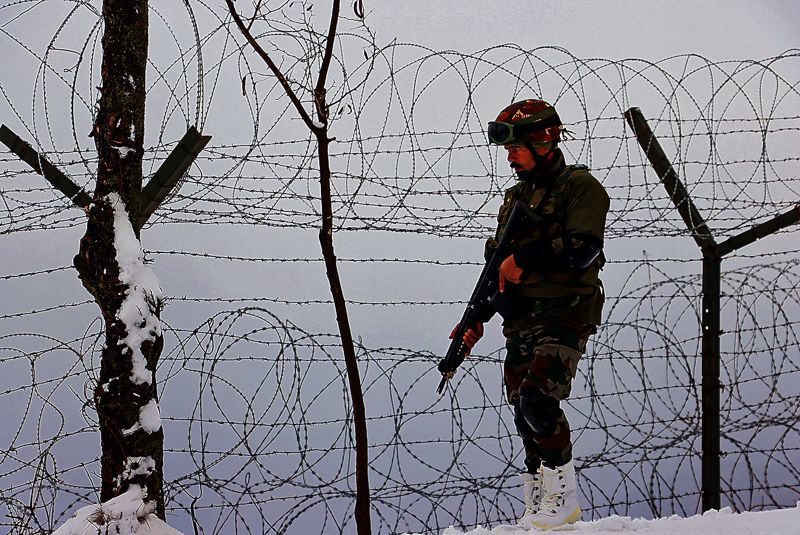

THE TRIBUNE DEBATE BORDER FENCING
ON February 6, Home Minister Amit Shah stated that the Centre was committed to building impenetrable borders. He mentioned that it had been decided to construct a fence along the 1,643-km-long India-Myanmar border. He added that this would facilitate better surveillance, even as a patrol track along the border would be paved.
In the context of national security, the fencing of borders has often caught the fancy of the political leadership worldwide. It is often seen as a solution to the multiple threats emanating from across the border. Governments are quick to undertake fencing to assuage the anxieties of citizens. One needs to examine the efficacy of fencing on the basis of evidence from various parts of the world.
The Berlin Wall acted as a fence between the two ideological and geographical poles of the Cold War — West and East Germany. Reportedly, an estimated 100,000 people tried to escape, and some 5,000 made it. Around 700 miles of the 1,933-mile-long US-Mexico border, stretching from the Pacific Ocean to the tip of South Texas, is fenced. The fence reportedly has landing mats and corrugated metal of surplus material from the Vietnam War. There is also a ‘floating fence’ that sits atop the dunes. For more than a decade, the fence has pitted Democrats and Republicans, who argue that current US asylum laws encourage the flow of immigrants from poorer Central Americans into the US. During the 2016 US presidential campaign, Donald Trump had floated the idea of constructing a wall to stop the inflow. But during his presidency, he failed to execute it because of the huge financial outlays involved; at some places, constructing a wall was nearly impossible due to the geography.
The Pakistan-Afghanistan fencing project was initiated in 2017 to halt the free flow of population on both sides of the 2,640-km-long Durand Line. While it has obstructed the movement of Pashtun tribes, videos on social media show that people are being smuggled by hiding them in goods vehicles and bribing personnel of the Pakistani Frontier Constabulary at designated border posts.https://9275fcf1cf3249c184846c28aaa0c1c4.safeframe.googlesyndication.com/safeframe/1-0-40/html/container.html
Without doubt, India’s principal national security threat in the past three decades has emanated from the 198-km International Border (IB) and 740-km Line of Control (LoC). Numerous attacks that shook the security establishment were carried out by men who came through this frontier. Then officer in charge of the IB in J&K, BSF Inspector General Vijay Raman, had told the author in December 2001 during a tour to the fencing sites that the project would be a game-changer for national security. The officer, who led the operation in which the mastermind of the 2001 Parliament attack, Pakistan national Gazi Baba, was killed in Srinagar in August 2003, had stated that the fencing project was shelved in 1995 due to objections by Pakistan, which considered the IB in J&K, unlike in Punjab and Rajasthan, as a ‘working boundary’. However, keeping in mind that the unfenced IB poses a risk to critical national assets such as railway and national highway infrastructure, which is not far from the border, the government decided to ignore protests and complete the project. In a few years, fencing along the IB and the LoC, which was more difficult because of the hilly terrain, was completed.
Notwithstanding the fact that fencing brought down infiltration, including the influx of terrorists and smugglers, it never became a foolproof deterrent. Many geopolitical factors led to the absence of support from the Pakistani army to curb infiltration. In practical terms, one can still map infiltration routes that are used by infiltrators along the IB as rivulets and heavy seasonal flooding render the fencing useless. As per the Pulwama attack chargesheet of the National Investigation Agency, one of the prime accused, Umar Farooq, nephew of Jaish-e-Mohammad founder Masood Azhar, had infiltrated through the Samba plains in April 2018 along the India-Pakistan border. Forty security personnel were killed as the 2019 attack brought India and Pakistan to the brink of a war-like situation. Another instance that came to light from the same area was a foiled bid to target Prime Minister Narendra Modi’s rally in J&K in April 2022. A truck driver had transported two terrorists after infiltration from the Samba sector and another person had sheltered them.
These incidents reflect that terrorists are still managing to sneak in through the IB. The introduction of drones has upset the security calculations. Drones have been regularly spotted in the airspace over the plains in border areas in Punjab and J&K. A drone operated from Pakistan’s Sialkot district had dropped explosives at the Indian Air Force station in June 2021, causing injuries to two personnel.https://9275fcf1cf3249c184846c28aaa0c1c4.safeframe.googlesyndication.com/safeframe/1-0-40/html/container.html
The situation is far more complex in the North East. Unlike the Pakistan frontier, except the upward and downward trend of militancy in the region, there is no serious security threat to the hinterland. Four northeastern states share their borders with Myanmar, and the movement of people had been going on since 1947. The Free Movement Regime had only provided official legitimacy to the situation that existed on the ground. The fencing project is being seen by non-Meiteis such as Chins, Mizos, Kukis, Zomis, Hmars and Kuki-Chins, who belong to the Zo community, as a political initiative. Manipur Chief Minister N Biren Singh, who comes from the Meitei ethnic stock, had attributed the ongoing violence in the state to the unregulated movement of people from Myanmar. Non-Meiteis feel that the fencing project would sever their age-old contact with co-ethnic people across the frontier in Myanmar.
Right now, the fencing is in its initial stages as a 10-km stretch in Moreh, Manipur, has been fenced; coverage of 20 km in Manipur has been approved. The practical aspects of the project are still being factored in. Leave aside the rationale of ethnic aspirations and familial ties, the fencing plan that demands huge financial commitment and manpower will have to consider global as well as regional experience. The overwhelming evidence is that fences are hardly foolproof, particularly in arduous terrain and in the context of enduring ethnic and familial bonds.
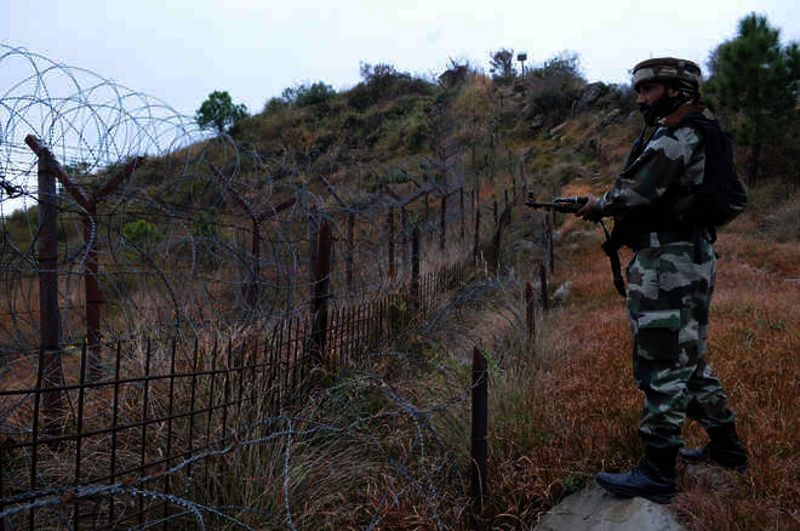

THE TRIBUNE DEBATE BORDER FENCING
FENCES are not walls. They are latter-day creations in accordance with the Westphalian concept to manage legal, regulated movement between historically undemarcated territories that continue to be, in certain cases, contested.
The manner in which the Partition was carried out in 1947 left people on both sides of a united expanse with similarities in identities but political differences. Punjab and Bengal bore the brunt of the division.
India’s claim over entire Kashmir is iron-clad, fence or no fence. Pakistan’s illegal occupation of parts of Kashmir and the fence that demarcates the Line of Control (LoC) at present are matters that are inseparable from Pakistan-sponsored terrorism. The fencing of the entire LoC is, therefore, a national security imperative. Incursion into Kashmir is a planned affair. It takes place with lunar cycle regularity. The Indian security forces deployed in the Valley need the fence. It is there to both guard it and ensure that intruders are neutralised.
If a comparison is drawn with the fence in the North East, the most important aspect that must be addressed is illegal migration from Bangladesh to India. This is largely due to economic reasons. Of late, climate change in south Bangladesh, whereby the waters of the Bay of Bengal are flooding some regions, is also responsible for the illegal ingress.
The fence between India and Bangladesh continues to be a ragtag one because of riverine issues, but the migration has been controlled to a great extent.
The fact that Sheikh Hasina’s government has been able to improvise work visas with several countries for the growing Bangladeshi labour force has reduced illegal migration into India. It is in this context that the India-Myanmar fencing proposal must be examined.
There are many naysayers who are of the view that the fencing of the entire 1,643-km border is not a sound idea. These critics are raising matters ranging from the end of the Free Movement Regime (FMR), which permits denizens residing along the boundary on either side to travel 16 km into the other country without a visa for trade, to the human aspect pertaining to the demographic contiguity that characterises India and Myanmar along the border. But a dispassionate cost-benefit assessment would show that the pros outnumber the cons.
The current unrest in Manipur is a direct result of the porous India-Myanmar border. After the military takeover in February 2021, Valley-Based-Insurgent Groups (VBIGs) in Myanmar’s Sagaing division had arrived at an understanding with the Myanmarese army.
The VBIGs will no longer be touched, harassed or ousted from their safe havens in what has come to be known as the northern, central and southern clusters in Sagaing division. In return, the VBIGs would have to help the army quell the civil unrest that erupted after the coup d’etat.
The development led to an end to the modicum of military cooperation that had been witnessed in the years preceding the military takeover by way of Operations Sunrise-I and Sunrise-II, which demolished several India Insurgent Groups’ (IIGs) camps in and around Taga (a hunting ground for IIGs just west of the Chindwin river). Manipur has witnessed the entry of VBIG cadres to battle the Kukis and the security forces.
It is a matter of concern that the porous border facilitates illegal migration of people and the smuggling of drugs and arms.
Furthermore, certain groups from Myanmar, who have social affiliations with residents of Manipur, have entered the state and begun to occupy forest lands.
Several thousand anti-junta rebels have fled to India since the 2021 military coup in Myanmar. Of late, even the Myanmarese army personnel had begun to enter Mizoram in a bid to escape the pursuing People’s Defence Force (the National Unity Government’s armed wing) and various ethnic militias.
The government’s commitment to constructing impenetrable borders is laudable. The decision to build a fence along the India-Myanmar border will facilitate better surveillance and prevent illegal migration and entry of VBIGs from across Myanmar.
The fencing has nothing to do with the Neighbourhood First Policy. Even if the FMR has to be jettisoned, so be it. I cannot think of one reason why it was a great idea, even when it came into being in 2018. If the FMR was unveiled in order to keep border trade alive, there are several mechanisms to ensure its continuance, including the ‘border haat’ system that is in place on the India-Bangladesh border.
The Assam Rifles, which guards the border with tenacity and for which it is now being targeted in Manipur, would testify to the fact that although all borders are in the final analysis imaginary, walls make better neighbours. Even beasts mark their territory and would not countenance trespass. Along the India-Myanmar border, it has been trespass, transgression and temerity. If one is questioning the decision to fence the border by arguing that it would sound the death knell for people-to-people contact, it must be stated that the FMR has not achieved that purpose by any measure. If anything, it has only facilitated the unfettered movement of terrorists, drug smugglers and gun-runners.
Also, the contiguity that characterises, for instance, the Naga people (if the broad social formation can be termed ‘Naga people’) is not limited to the 16 km that the FMR has permitted, but it can actually go all the way to Taga, a place that is inhabited by Rangpang Nagas.
Harsh times call for tough calls. The situation in Manipur, Myanmar and Mizoram, intertwined as it is with a curious mix, calls for courageous decisions.
Manipur is not offering any easy solution. It is also known that much of the subterfuge in Manipur is a result of the sinister and motivated entry of the VBIGs into the state from Myanmar’s Sagaing division.
It must be understood that India’s national security is paramount. If the borderlands have to be fenced, so be it.


MANY vital events are expected to unfold in the coming months. Statements such as “this is not an era of war” have been proven wrong many times over, exemplified by the Russia-Ukraine conflict that is in its third year. While Russia has held firm with its objective, backed by a robust military-industrial complex, the Western powers are finding it tough to continue pouring in billions of dollars — with no end in sight — to help Ukraine oppose Moscow’s sustained pressure. China is continuing with its expansionist acts off its Eastern Pacific coast, with l’affaire Taiwan being the subject of many conjectures about Beijing’s next step. There are the ‘forgotten’ conflicts in Africa, masked now by the Russia-Ukraine-China activities — and all have been overtaken by the Palestine-Israel conflagration that threatens to engulf the region by drawing in Iran, the US, West Asian and Gulf nations. Where does this volatile environment place India in the run-up to its General Election, with an unstable Pakistan on its west and an inimical China up north? It is vital that New Delhi gets its strategy right in the ongoing churn in the world order.
The cliché that there are no permanent friends or enemies in international relations, just permanent interests, could not be more apt in the present churn. Accordingly, we are utilising the Quad grouping as well as advancing friendships with South East Asian countries to send out a message to Beijing, while holding our own amid conflicting diplomatic pulls in the conflicts west of us. In these manoeuvrings, it is vital that Henry Kissinger be invoked for what he wrote in his book World Order. Commenting on international relationships, Kissinger opined: “… in international affairs a reputation for reliability is a more important asset than demonstration of tactical cleverness.”
These are wise words as India grapples with Chinese attempts at influencing its neighbours; the downturn in relations with Maldives (despite aid offered to it at critical times) is emblematic of the challenges before us. Do other neighbours, such as Bhutan and Nepal, see us as a reliable partner or is India viewed as a dominating big brother? In our attempt to buttress our sphere of influence, have we overassessed our capabilities and got a faux sense of power?
Power is the ability of a state to create outcomes and, more importantly, sustain them. National power has two major aspects. First, the possession of capability to process an aim and second, the ‘will’ to action it. Having the capability but not the will is a non-starter for any aspirational nation. However, this is less damaging than starting on a path without the capability to carry it through to fruition. The ‘will’ is an intangible that represents political ambition, while ‘capability’ is material in nature — call it having the ‘strategic depth’ in terms of economic strength, R&D, manufacturing capacity, military strength and qualified human resources to back the ‘capability.’ The possession of capability and a consistent demonstration of the will to use it bring in the reliability factor. The moot point is whether we have ‘arrived’ in the international arena with such credentials. World history, perhaps, has some pointers.
Nations and empires have risen to eminence and then faded away. Paul Kennedy’s seminal work, The Rise and Fall of the Great Powers, lays this bare. These cyclical episodes arise from rising aspirations of a country which feels that its time has come for pre-eminence in the pecking order; nothing wrong in improving one’s standing, except that its translation to attempted dominance has always resulted in conflict, as Kennedy’s work brings out. This fact cannot be wished away and in the realist world must be planned for so that one does not come across as being flippant in international interaction. To quote Kissinger again, “… history punishes strategic frivolity sooner than later.” So, strategic dependability and reliability are what India should be seen as offering its friends.
Strategic reliability flows from the economic and military strength of a nation. Certain events do not read too well vis-à-vis our dependability. India’s friend, former President Najibullah, was hung by the Taliban in Afghanistan in 1996 — we couldn’t help him; in August 2021, then President Ashraf Ghani couldn’t be propped up despite our attempts. Oil purchases from Iran, India’s major supplier of crude, were curtailed in mid-2019 following demarches by the US following the collapse of the Iran nuclear deal. Similarly, stopping the export of rice in July 2023 resulted in frantic and desperate calls worldwide for restoration, including from the IMF. During Covid times, after having offered help to poorer countries for vaccines, the exports were stopped due to internal requirements, which resulted in adverse reactions. Nepal, for example, had to suspend its vaccination programme. Then there is the issue of stoppage of Gorkha recruitment in the Indian Army (due to the Agnipath scheme), which was a vital employment outlet for Nepalese youth. Bhutan, critical for our security, now has a quarter of its trade with China, is directly discussing border problems with it and is substantially dependent on Beijing for telecom and road building. Does Thimphu feel that our capability vis-à-vis the Chinese is suspect? Bangladesh, like the Maldives, seems to be having a nascent ‘India Out’ political campaign, while Sri Lanka still blows hot and cold to India’s objections to increasing Chinese influence in its polity.
We certainly have many strong points working for us and need to build on them by enhancing R&D, manufacturing, per capita GDP, etc. — so that we enhance strategic dependability. There is no harm in learning from the Chinese, who for decades followed Deng Xiaoping’s dictum “hide your capability bide your time” before making their move with firm commitments. India is an aspirant to a place at the high table of international power politics; for that, a reputation for strategic dependability is a sine qua non. One hopes that India’s political leadership accepts this truism.

New Delhi, March 1
Considering free, fair, and peaceful parliamentary elections in West Bengal, the Centre has deployed 100 companies of the Central Armed Police Forces (CAPF) in the first phase of deployment, with 820 additional companies scheduled to be relocated gradually in separate phases, officials said.
The move comes days after the Election Commission sought the deployment of a maximum of 920 CAPF companies in West Bengal.
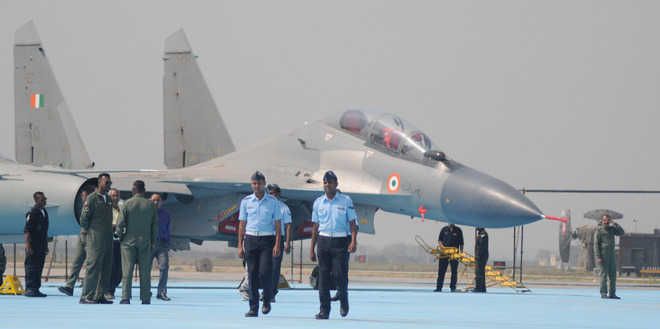
New Delhi, March 1
Three squadrons of the Indian Air Force (IAF), which played an important role in the wars with Pakistan in 1965 and 1971, along with the base repair depot of the IAF, will get President’s Standard and Colours from President Droupadi Murmu at the Air Force Station, Hindan, on March 8.
Acknowledgement of excellence
The award is an acknowledgement of the operational excellence, dedication and proven contribution of these units both during peace and war. Air Marshal PM Sinha, aoc-in-c, western air command
Among the squadrons to get the colours is 11 Base Repair Depot that repairs fighter aircraft. It is tasked with overhauling MiG-29 and Su-30 MKI aircraft.
45 Squadron that files the Tejas jets will also get the colours. On August 1, 1965, when Pakistan launched a massive attack in the Chhamb sector, the 45 Squadron was the first IAF unit to launch offensive missions on the first day of the conflict.
221 Squadron that flies the Sukhoi 30 MKI will also get the colours. It was pressed into action in the eastern theatre during the 1965 India-Pakistan War. During the 1971 war, operating in the eastern theatre, the squadron undertook extensive counter air, close air support and photo reconnaissance missions.
The attack over Kurmitola and Tezgaon airbases resulted in destruction of several Pakistan Air Force jets. During Operation Safed Sagar in the Kargil conflict, the opening ariel shots were fired by the 221 Squadron.
The 509 Signal Unit works in Meghalaya. During the Bangladesh Liberation War of 1971, the unit emerged as the epicenter of all air defence activities over East Pakistan. A defining moment came with the precision strike on the Governor’s House in Dhaka, orchestrated from the operations room of the unit.
About The Author

























































